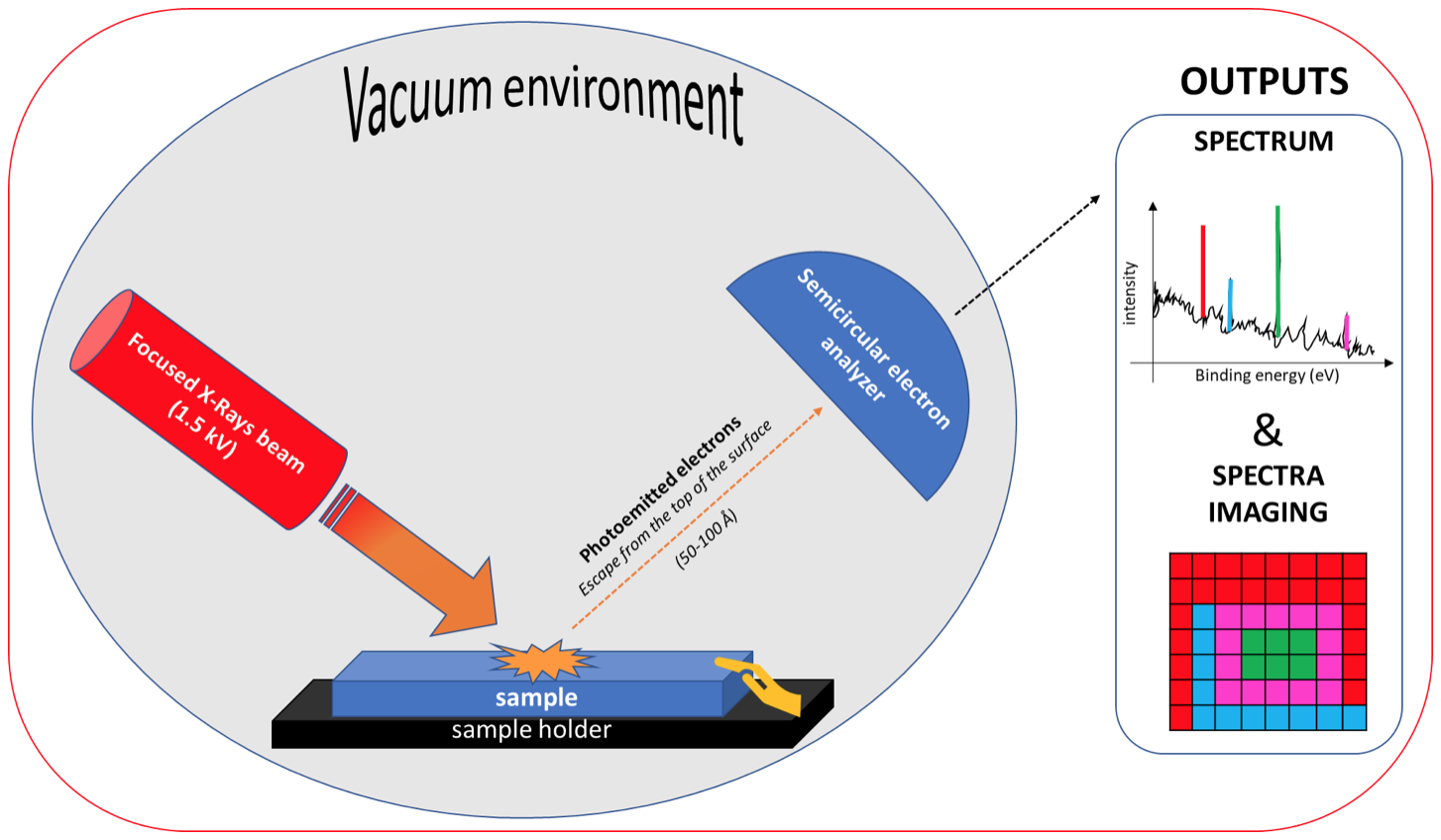How can we study the chemistry of a surface? PART 1
X-Ray Photoelectron Spectroscopy
XPS or ESCA
X-ray Photoelectron Spectroscopy (XPS) or Electron Spectroscopy for Chemical Analysis (ESCA) is a technique useful to analyze the elements constituting the sample surface.
With this technique it’s possible to know which elements are present on the sample and how they are related to each other (their chemical bonding state) by irradiating X-rays on the sample surface and measuring the kinetic energy of the photoelectrons emitted from the surface.
XPS technique generally provides information about elements present within a few nanometers from the sample surface (50-100 Å) with a lateral resolution of about 10 µm.
It is used for element/chemical analysis for a wide range of solid samples from conductive to insulating materials. However, when insulating material samples are analyzed, a positive charge occurs in the X-ray irradiated area due to the generation of photoelectrons. To overcome this issue, a charge neutralization is necessary during measurement.
Using XPS is also possible to perform depth profiling, using an ion sputtering to perform surface etching. Depth profiles are used for film thickness evaluation of samples with a multilayer structure (within one micron) and for corrosion analysis of metals.
Besides the spectrum, where it is possible to identify the elements and analyzing the core lines with higher resolution it is possible to discriminate the different bonds, another output is the imaging which correlates the element with its position on the analyzed sample area.
The analysis is performed in ultra-vacuum environment, therefore the sample to analyze has to be compatible with this condition.
This kind of analysis is generally used for organic and inorganic surface, stains or residuals and, apart from chemical composition (also in a thin depth profile), it is used to measure thin film oxide thickness.




